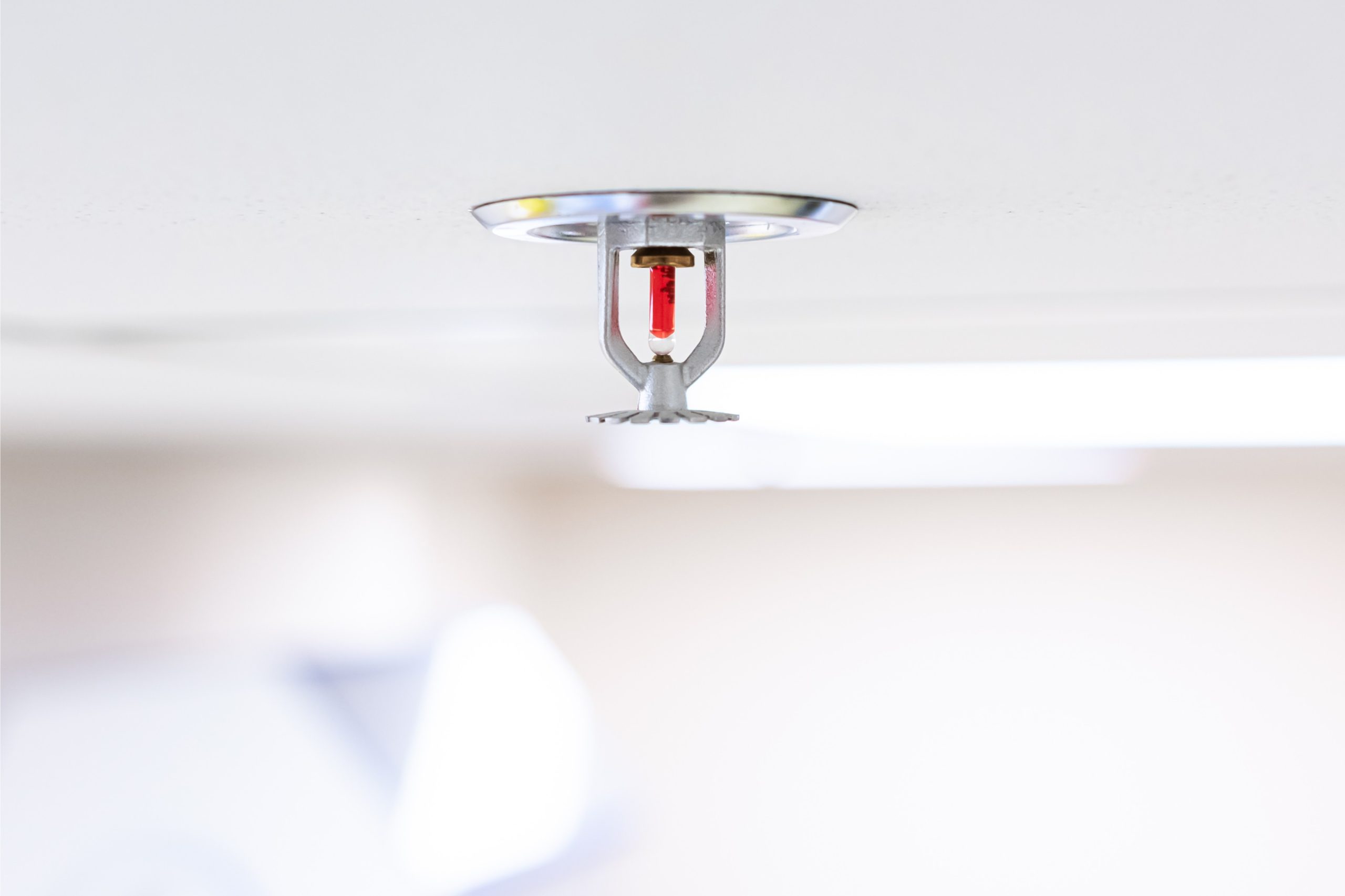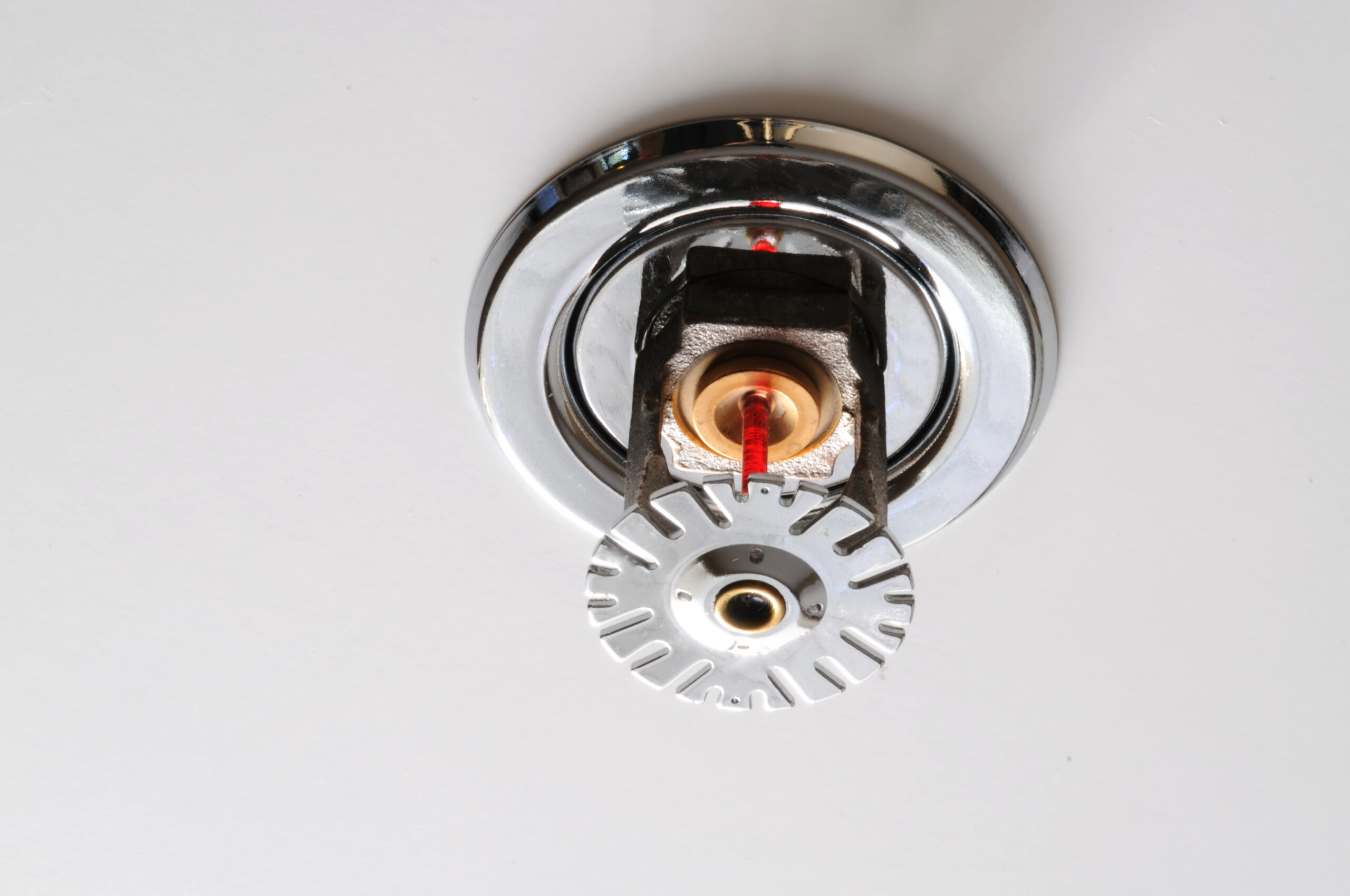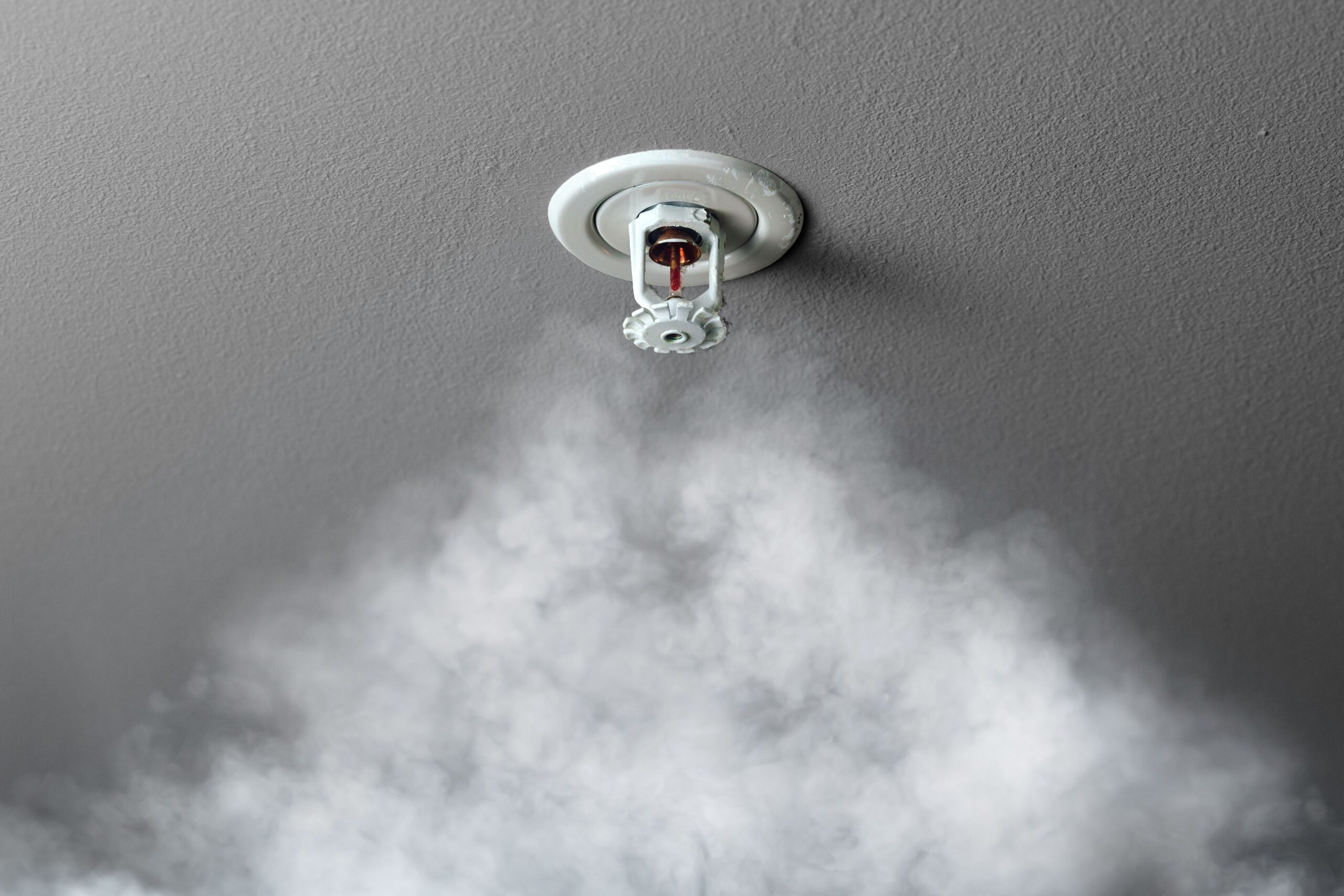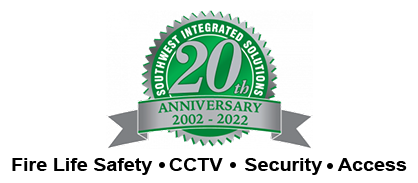How to Install a Fire Sprinkler System
A fire sprinkler is a vital component of fire protection and suppression systems designed to automatically release water in the event of a fire, helping to control or extinguish the flames and limit the spread of fire-related damage. These systems are part of active fire protection measures employed in various structures, including residential, commercial, industrial, and institutional buildings.

Introduction to Fire Sprinkler Systems
The primary purpose of fire sprinklers is to provide rapid and localized fire suppression, preventing the escalation of a fire to a catastrophic level. Fire sprinkler systems constitute a network of pipes connecting to a water supply, and each sprinkler head is strategically placed to cover specific areas. The system typically activates when it detects a certain heat level, causing an individual sprinkler head to release water onto the affected area.
Here are the key components and features of fire sprinkler systems:
1. Sprinkler Heads:
– The individual components that disperse water when activated. Sprinkler heads are designed to respond to heat, and each head operates independently.
2. Piping System:
– A network of pipes that delivers water to the sprinkler heads. The piping system is designed to withstand the pressure to distribute water effectively.
3. Control Valve:
– A valve that controls the flow of water into the sprinkler system. It typically connects to the building’s water supply and has a mechanism to trigger the system in response to heat.
4. Alarm System:
– Some fire sprinkler systems include an alarm system that activates when the sprinklers trigger. It alerts occupants and emergency responders to the presence of a fire.
5. Water Supply:
You can obtain the water supply for a fire sprinkler system from a dedicated tank, a municipal water supply, or other reliable sources.
6. Heat Sensing Element:
– Each sprinkler head contains a heat-sensitive element, often a glass bulb full of liquid that expands and breaks when exposed to a certain temperature. This breakage releases the water.
7. Design Standards:
– Fire sprinkler systems are designed and installed according to specific standards and regulations, ensuring they meet safety requirements and effectively respond to fire emergencies.
How to Install a Fire Sprinkler System
Installing a fire sprinkler system involves a detailed and systematic process to ensure the system is designed, configured, and installed correctly. Here is a summary of the steps in the installation of a fire sprinkler system:
1. System Design:
– Site Assessment: Conduct a thorough building assessment to determine the occupancy type, fire hazards, and specific requirements for fire protection.
– Building Plans: Review the detailed building plans and blueprints to understand the layout and structure of the building.
– Code Compliance: The design must comply with local building codes, fire codes, and regulations. Professional designers and engineers ensure that the system meets these standards.
2. Hydraulic Calculation:
– Hydraulic calculations are performed to determine the water flow, pressure requirements, and pipe sizing for each sprinkler head. It ensures that the system can deliver adequate water to control or suppress a fire.
3. Selection of Sprinklers and Components:
Select appropriate sprinkler heads, pipes, fittings, control valves, and other system components depending on the design and hydraulic calculations.
4. Installation Planning:
– Develop a detailed installation plan outlining the location of sprinkler heads, pipe routes, control valves, and any additional equipment.
5. Pipe Installation:
– Install the fire sprinkler system pipes according to the approved plan. It involves running pipes along ceilings, walls, and other designated areas. Pipes are adequately secured to prevent sagging or movement.

6. Sprinkler Head Installation:
– Follow the system design specifications and install fire sprinkler heads in designated locations. The height and orientation of each sprinkler head are crucial for effective water distribution.
7. Control Valve Installation:
Control valves are installed to regulate the water flow in the system. Depending on the type of system, these valves may include alarm check valves, deluge valves, and pre-action valves.
8. Connection to Water Supply:
– The fire sprinkler system connects to the building’s water supply. This connection may involve installing a dedicated water supply or tapping into the existing water distribution system.
9. Alarm System Integration:
– If the system includes an alarm, the components integrate into the overall system. It may consist of pressure switches, flow switches, and audible or visual alarms.
10. Pressure Testing:
– The installed system undergoes pressure testing to ensure that pipes and components can withstand the required pressure without leaks. It is a critical step in confirming the system’s integrity.
11. Flushing and Draining:
The system is flushed to remove debris or contaminants that may have entered during installation. After flushing, it is drained to prevent freezing in cold climates.
12. Final Inspection and Approval:
– Local authorities or fire officials conduct a final inspection to verify that the system complies with codes and regulations. Once approved, the system is ready for use.
13. Documentation:
– As-built drawings and documentation are created to reflect any modifications made during installation. These documents serve as a reference for future maintenance and inspections.
14. Training and Education:
– Building owners, facility managers, and occupants should learn the fire sprinkler system’s proper use, maintenance, and testing. Training may include how to respond to alarms and emergency procedures.
15. Ongoing Maintenance:
– Regular maintenance and checking of fire sprinkler systems are essential to ensure their continued functionality. It includes periodic inspections, testing of control valves, and checking alarm systems.
It’s important to note that qualified professionals, including engineers and technicians with expertise in fire protection, should be the ones to install the fire sprinkler system. Additionally, compliance with the local building codes and regulations is critical to the success and effectiveness of the installed system.
Types of Fire Sprinkler Systems
There are several fire sprinkler systems, each designed to address specific fire protection needs based on the type of occupancy, potential fire hazards, and environmental conditions. The main types of fire sprinkler systems include:
1. Wet Pipe Sprinkler System:
– Description: This is the most common type of fire sprinkler system. In a wet pipe system, water is constantly present in the pipes. When a sprinkler head is activated due to heat from a fire, water is immediately discharged onto the affected area.
– Application: Suitable for areas where the ambient temperature is above freezing and the risk of frozen pipes is low. It is common in office buildings, residential structures, and commercial spaces.
2. Dry Pipe Sprinkler System:
– Description: In a dry pipe system, pipes fill up with pressurized air or nitrogen instead of water. When a sprinkler head activates, the pressurized air releases, which allows water to flow into the pipes and discharge through the open sprinkler head.
– Application: Ideal for areas where freezing is a concern, such as unheated warehouses, parking garages, or buildings in colder climates.
3. Pre-Action Sprinkler System:
Description: Pre-action systems are similar to dry pipe systems but require additional water release steps. These systems allow water into the pipes by using a fire detection system (such as smoke or heat detectors) and sprinkler activation.
– Application: Suitable for environments where accidental water discharge must be minimized, such as data centers, archives, or museums.
4. Deluge Sprinkler System:
– Description: Unlike other systems, all sprinkler heads in a deluge system are open, and a deluge valve holds back water. When the valve trips, typically by a fire detection system, water releases simultaneously from all sprinkler heads.
– Application: Usable in high-hazard areas where a rapid and massive amount of water is necessary to quickly control or suppress a fire, such as in chemical storage facilities or aircraft hangars.
5. ESFR (Early Suppression, Fast Response) Sprinkler System:
– Description: ESFR sprinkler heads are designed to quickly deliver a high volume of water to suppress a fire in its early stages. These systems are often practicable in high-bay storage areas.
– Application: Common in warehouses and storage facilities with high ceilings, where traditional sprinkler systems may be less effective.
6. Residential Sprinkler System:
– Description: Designed specifically for residential applications, these systems often use smaller, inconspicuous sprinkler heads. Residential sprinklers typically connect to the domestic water supply.
– Application: Installed in homes and apartments to provide fire protection for occupants and property.
7. Medium Velocity Water Spray System:
– Description: This system uses open spray nozzles to discharge water at a medium velocity. It is common for fire protection in certain industrial processes and facilities.
– Application: Found in environments where specific fire hazards, such as flammable liquids or electrical equipment, require the use of water spray for suppression.
8. High Velocity Water Spray System:
– Description: Similar to medium-velocity systems, high-velocity systems use open spray nozzles but discharge water at a higher velocity. It is often necessary for fire protection in specific industrial processes.
– Application: Used in high-hazard areas where a more forceful water spray is requisite for effective fire suppression.
The selection of a specific type of fire sprinkler system to install depends on factors such as the nature of the occupancy, the fire hazards present, and environmental conditions. Fire protection professionals and engineers typically thoroughly assess the most appropriate system for a given application. Regular inspection, testing, and maintenance are vital to ensure the reliable functioning of fire sprinkler systems.

Advantages of Fire Sprinkler Systems
A fire sprinkler system in a building provides numerous advantages, contributing to the safety of occupants and property. Here are some key benefits when you install a fire sprinkler system:
1. Early Fire Suppression:
– Fire sprinkler systems are designed to react to a fire in its early stages. Individual sprinkler heads activate based on heat, helping to control or extinguish the fire before it can escalate into a major blaze.
2. Life Safety:
The primary purpose of fire sprinklers is to protect lives. By suppressing or controlling the spread of fire, sprinkler systems give occupants additional time to evacuate safely.
3. Property Protection:
– Fire sprinklers help minimize property damage by quickly addressing and containing fires. It can reduce the extent of fire-related destruction and limit the financial impact on property owners.
4. Rapid Response:
– Fire sprinkler systems provide an automatic and immediate response to a fire. They don’t rely on human intervention or the arrival of emergency responders, offering a rapid and localized solution to fire emergencies.
5. Reduction of Fire Intensity:
– Sprinklers reduce the intensity of a fire, creating a safer environment for firefighters when they arrive. It can aid in the overall firefighting efforts and enhance the chances of successful containment.
6. Limitation of Fire Spread:
Sprinkler systems control fire at its source, helping prevent the rapid spread of flames and the generation of toxic smoke. This containment is crucial for the safety of occupants and emergency responders.
7. Protection 24/7:
– Fire sprinkler systems operate automatically around the clock. They provide continuous protection, whether the building is occupied or vacant, ensuring a swift response at any time in the event of a fire.
8. Lower Insurance Costs:
– Many insurance providers offer reduced premiums for buildings with fire sprinkler systems. The presence of a functioning sprinkler system is often viewed as a proactive measure to mitigate the risk of fire damage.
9. Code Compliance:
– Building codes and regulations often require fire sprinkler systems, especially in commercial, industrial, and high-rise residential structures. Compliance with these codes is essential for occupancy permits and legal adherence.
10. Enhanced Fire Safety:
Fire sprinklers complement other fire safety measures, such as smoke alarms and fire extinguishers. Together, they create a comprehensive fire protection strategy.
11. Environmental Impact:
– Fire sprinklers can have environmental benefits by helping to prevent the release of hazardous substances and pollutants that may result from uncontrolled fires.
12. Reduced Fire Department Response Time:
– By containing or extinguishing a fire before it spreads, fire sprinklers can reduce the demand on local fire departments, allowing them to respond more efficiently to other emergencies.
13. Customization for Specific Hazards:
– Different fire sprinkler systems are designed for specific hazards, allowing for customization based on the nature of the occupancy and potential fire risks.
In summary, fire sprinkler systems offer a comprehensive and proactive approach to fire safety, providing numerous benefits for life safety and property protection. Their automatic and rapid response and ability to contain fires early make them a crucial component of modern fire protection strategies.

